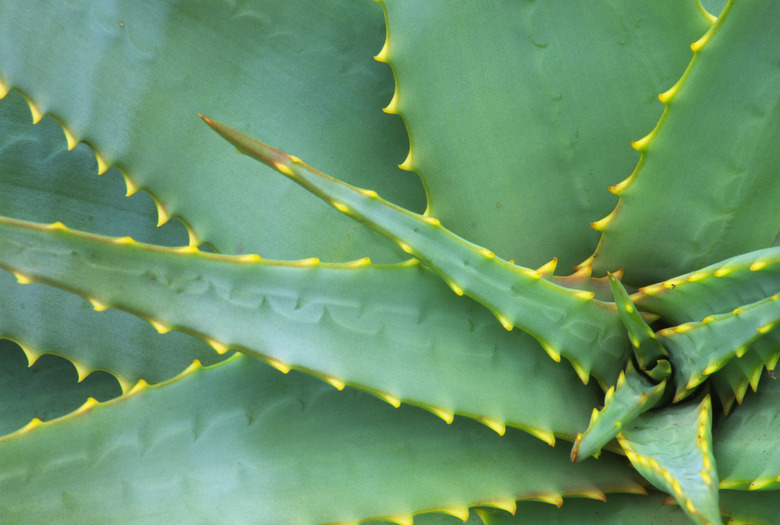Agave Plant Dangers
More than 200 species of agave (Agave spp.) grow in U.S. Department of Agriculture plant hardiness zones 6 through 11. This succulent is classified as a perennial; however, it may only bloom once in a lifetime, not every year. Agave translates to "noble" in Greek, named so for the prolific center stalk in some species that bears flowers. The most common agave grown in the U.S. is Agave americana, which boasts a flower stalk reaching heights of 40 feet with green/yellow flowers. This species grows best in well-draining soil in USDA zones 8b to 11 in full sunlight.
Beware of My Fingers
Agaves are attractive succulents, but can be dangerous when planted near walkways, due to their body armor. The leaves are generally stiff and contain a very sharp point on the end, with jagged teeth along the leaf edges. The spear on the end and the teeth on the sides can tear through clothing and skin, causing serious injuries.
- More than 200 species of agave (Agave spp.)
- The most common agave grown in the U.S. is Agave americana, which boasts a flower stalk reaching heights of 40 feet with green/yellow flowers.
Please Don't Touch or Eat Me
The agave leaves contain a sap that is toxic to humans and pets. Skin irritation and itching develops from rubbing against the plant in the form of contact dermatitis. Skin exposed to the sap turns red, burns immediately and will develop blisters in the contact area. If a child or pet is unfortunate enough to ingest agave, the sap irritates everything it touches including skin, lips, tongue and throat, with extensive swelling. Breathing may become difficult and medical attention is needed immediately.
Save A Dying Agave Plant
Ask your agave supplier or local garden store for precise hardiness zone information for your plant. Many agaves thrive in temperate climates, like the squid agave (Agave bracteosa) with its curving succulent leaves that prefers USDA zones 8 though 11, or the century plant (Agave americana) that thrives in USDA zones 8 though 10. Transplant the agave if it is growing in soil with poor or average drainage. Avoid all overhead watering. Decay microbes enter through the holes and rot the agave tissue, and the larvae hatch in the dying plant. Apply a broad-spectrum insecticide in early spring if your agave is infected. Look for scale insects attached to agave leaves. Provide plants with optimal irrigation and well-draining soil to avoid this problem.
- The agave leaves contain a sap that is toxic to humans and pets.
- Apply a broad-spectrum insecticide in early spring if your agave is infected.
